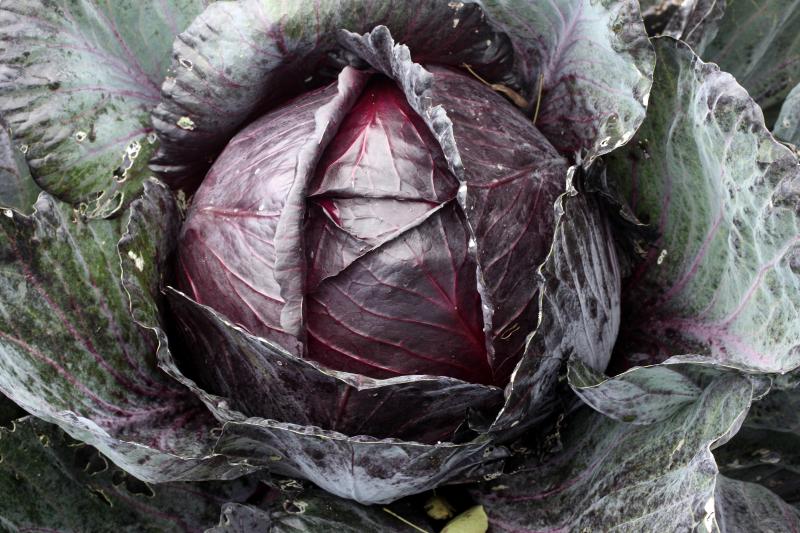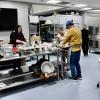Red cabbage provides garden beauty and good nutrition
Spring means baseball, and baseball means hot uniforms made of wool, or at least it used to. So, back in the day, players like Babe Ruth were always looking for ways to cool off, and for the Babe, it meant wearing cabbage leaves under his baseball cap. He would place the cabbage leaves in the icebox and switch them out for fresh ones every two innings.
Besides being an erstwhile air conditioner, cabbage is a good source of vitamin C, vitamin K, potassium, manganese and dietary fiber. Fermented cabbage such as sauerkraut is full of probiotics that help the immune system and digestive system. The sulfur in red cabbage promotes the body’s production of keratin for healthy nails and hair.
Cabbage is known as a cruciferous vegetable, named after its cross-shaped flowers. Like all cruciferous vegetables, it is scientifically proven to lower the risk of developing cancer. And the healthiest cabbage is red cabbage (Brassica oleracea).Red cabbage has 10 times the vitamin A of standard green cabbages, plus twice as much iron. And besides feeding your body, red cabbage makes a great natural dye for foods and fabrics.
Red Kalibos is pretty enough to grow in the flower garden. Its cone-shaped, 2-pound heads are ruby red and have a mild sweet flavor. Tete Noire is a dark-red cabbage from France. This delicate small variety has delicious, firm heads.
For the earliest harvest, start seeds indoors about six to eight weeks before your last spring frost. You can also buy transplants and set them out after the soil has warmed up, two or three weeks before the last spring frost. Ideal soil pH is 6.5-7.
For a fall crop, sow cabbage seeds directly in the garden in midsummer. Plant the seeds 1/4-inch deep. Thin the seedlings so the plants are at least 12 to 18 inches apart. Plants grown closer together will yield smaller heads, which some cooks prefer.
Keep the red cabbage plants well watered but not soggy. Because cabbages use a lot of nutrients they are known as heavy feeders. Add compost or well-rotted manure to the beds or use a balanced (10-10-10) fertilizer. Plant borage near your red cabbage, because these two are good companion plants.
To keep soil-borne diseases away, always rotate your crops; never plant the same crop in the same garden spot two years in a row.
Pick your red cabbage when the head is firm when you squeeze it. Never store cabbage with apples, because apples give off ethylene gas that will rot the cabbage.
So, plant red cabbage and enjoy a healthy meal, or just put a leaf on your head to cool off. You will feel like you hit a home run!























































